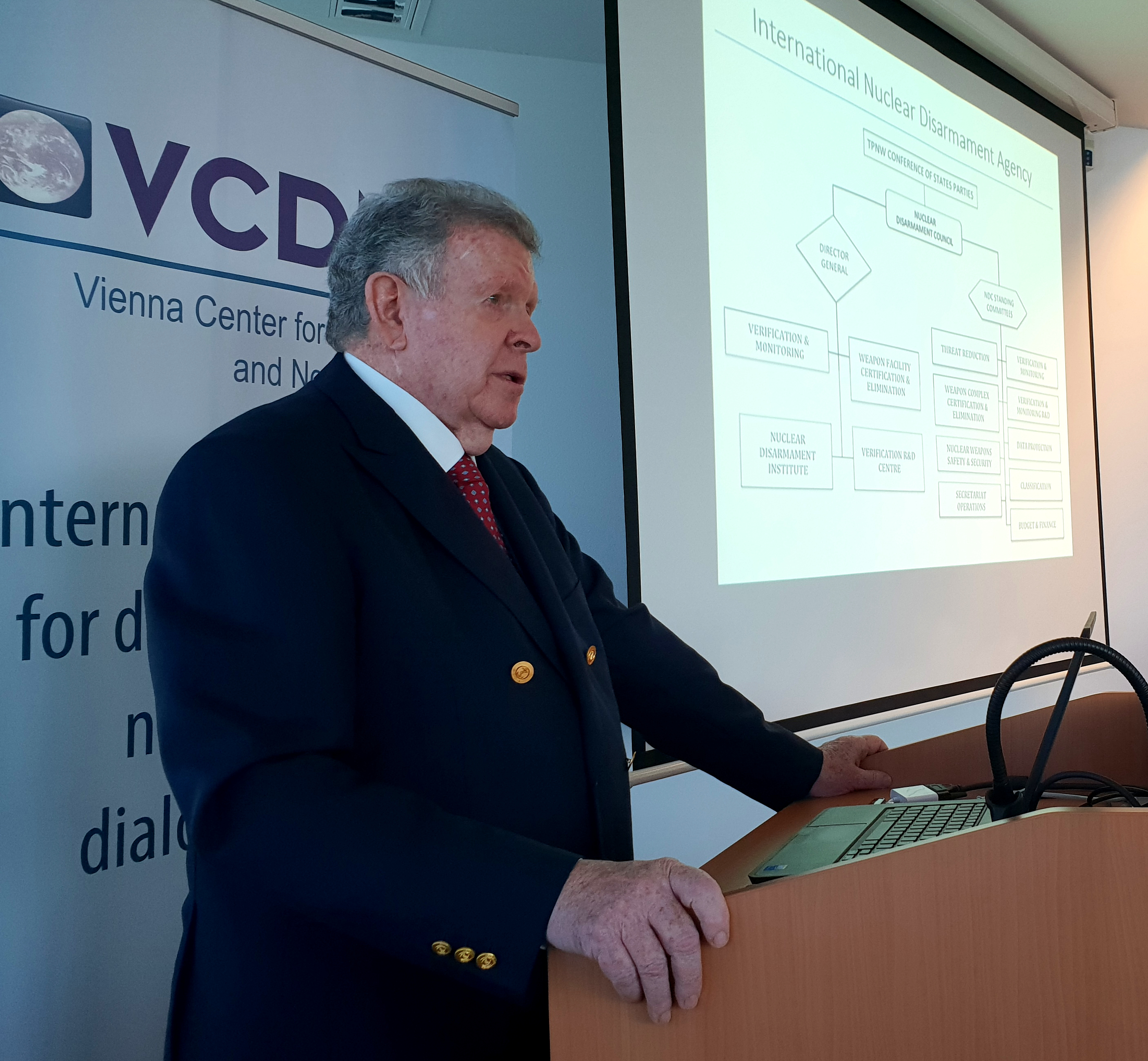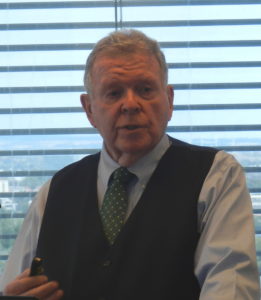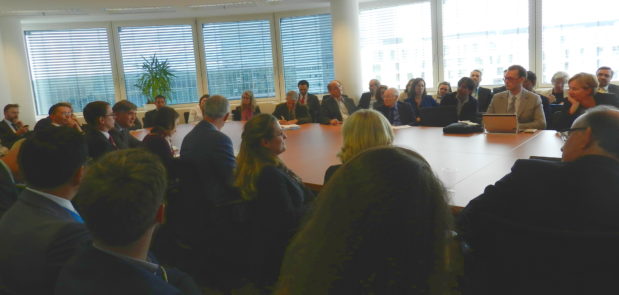
On 13 September 2017, the VCDNP, in collaboration with the Vienna Chapter of the Institute of Nuclear Materials Management, held a seminar by Dr. Thomas Shea, Senior Adjunct Fellow at the Federation of American Scientists, on “Verifying the Treaty on the Prohibition of Nuclear Weapons.” The seminar was moderated by VCDNP Executive Director Laura Rockwood, and followed by a question and answer session.

During the seminar Dr. Shea previewed the forthcoming book, to be published in 2018 by Routledge Press, on the verification challenges and possible solutions of the recently adopted Treaty on the Prohibition of Nuclear Weapons (TPNW). The Treaty, concluded in July 2017, opened for signature on 20 September 2017 at the United Nations in New York and will enter into force after 50 States deposit their instruments of ratification. Dr. Shea proposed the creation of a new international organization to verify the elimination of nuclear weapons, as mandated by Article 4 of the TPNW, and work in conjunction with the International Atomic Energy Agency (IAEA) to prevent nuclear rearmament.
Dr. Shea pointed out that, according to the TPNW, State Parties to the Treaty must designate a competent international authority, or authorities, who shall oversee the irreversible elimination of nuclear weapons programmes and related facilities. Given the complexity of the task and the fact that disarmament verification is already a controversial subject at the IAEA, Dr. Shea argued that it would be necessary to establish a new organization and suggested calling it the International Nuclear Disarmament Agency (INDA).
Creation of a new organization would not mean replacing the IAEA as the non-proliferation verification authority but would rather allow for the division of duties whereby:
Going into greater detail on how the INDA and the IAEA would share the responsibilities, Dr. Shea presented both a draft organizational structure and verification model for the INDA. Under this archetype, the INDA would oversee the removal and disposition of fissile material from nuclear weapons across four stages. If INDA and each nuclear-armed State would agree, the verification could advance to begin with the removal of the warhead itself from its delivery system. INDA would be tasked with verifying the dismantlement of the warhead and removing its components that contain classified forms of fissile material. Once the warhead had been safely dismantled and the fissile materials had been removed, highly enriched uranium (HEU) could be transferred to use in naval reactors or downblended to low enriched uranium for peaceful uses. The options for plutonium disposition, however, are much more limited.
Two requirements are essential, Dr. Shea argued, for this verification model to be implemented appropriately. First, no verification method should allow the inspectors to gain access to classified information upon dismantling the nuclear warhead. Second, verification must be based on sound scientific principles to produce independent and authentic results. Meeting these conditions poses a major challenge for inspectors overseeing the dismantlement of warheads that necessarily contain within them classified fissile material primary and secondary components. Four methods that could allow for such verification have been identified, but none have been tested and proven in relation to the security requirements noted.
Dr. Shea also discussed the IAEA’s potential role in preventing nuclear rearmament as part of the implementation of the TPNW. He specified six missions, each covering a different area of concern, that the IAEA should have the responsibility to implement. These would include, but not be limited to: verifying the fissile material disposition; overseeing the modification of all mission-critical nuclear weapon facilities; detecting the diversion of weapon-usable nuclear materials from peaceful nuclear energy programs; and detecting undeclared stocks and clandestine production facilities.
However, Dr. Shea also pointed out concerns associated with inspecting former nuclear weapons-related facilities. Like a warhead itself, a mission critical nuclear facility would have classified areas closed to inspectors. Working with nuclear-weapon States to overcome these obstacles is likely to be difficult, and transparency measures would be needed to address this challenge. In this regard, Dr. Shea put forward several confidence building measures, including: controls on warhead manufacturing which could be agreed on a bilateral basis; controls on fusion materials such as tritium; a ban on the use of HEU along with a ban or a moratorium on the use of plutonium by all parties until a more global solution could be reached.
In concluding his presentation, Dr. Shea brought together multiple elements, which he hopes the State Parties to the TPNW would discuss once it enters into force, ranging from the creation of a new organization to the IAEA’s ever growing verification portfolio. During the question and answer period, audience members commended Dr. Shea’s work in outlining a potential authority which could work effectively with the IAEA without encroaching on the latter’s mandate in verifying nuclear non-proliferation. However, participants raised concerns about the ability of States to work together effectively, and Dr. Shea also echoed such concerns in his closing statement.
